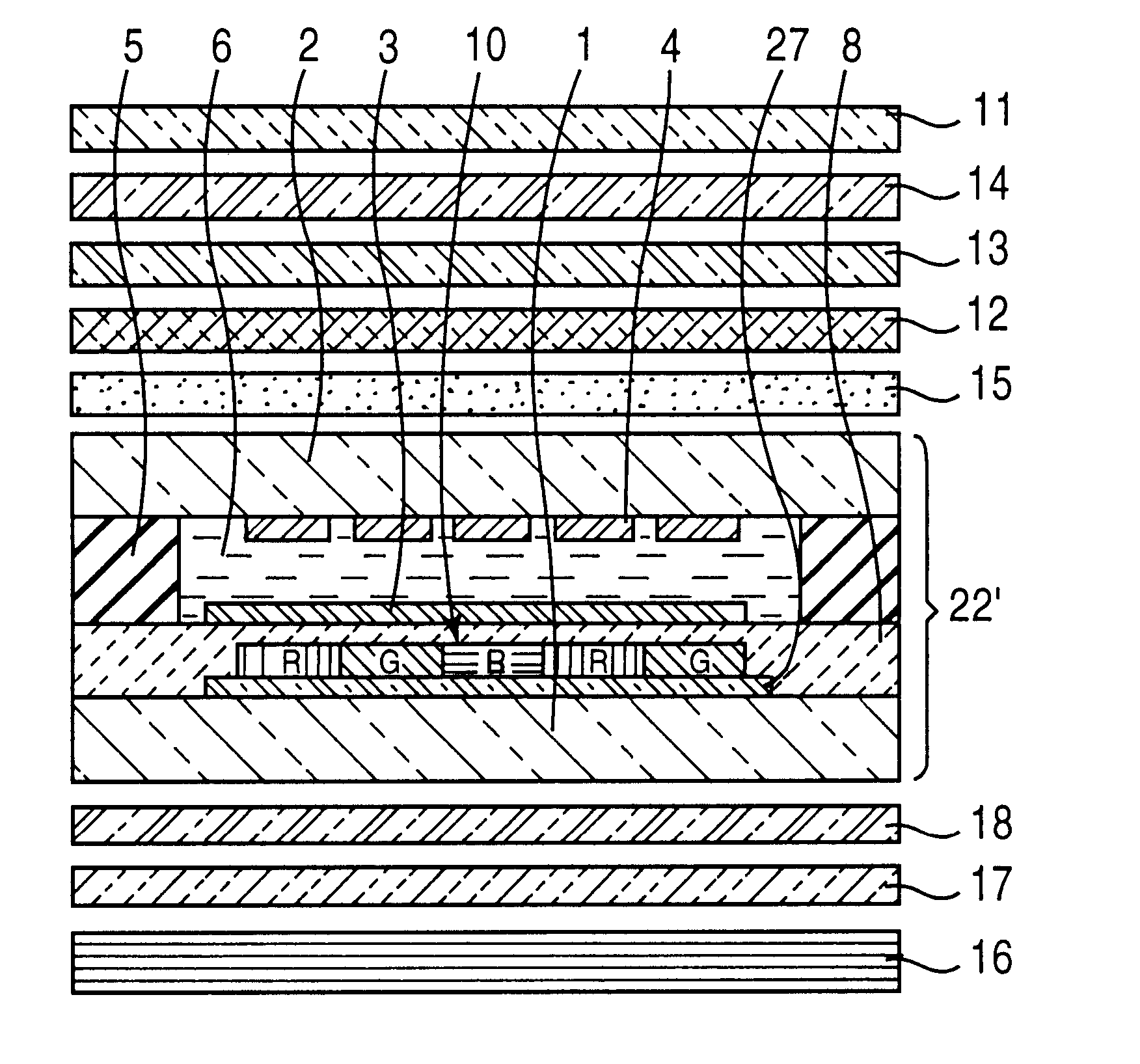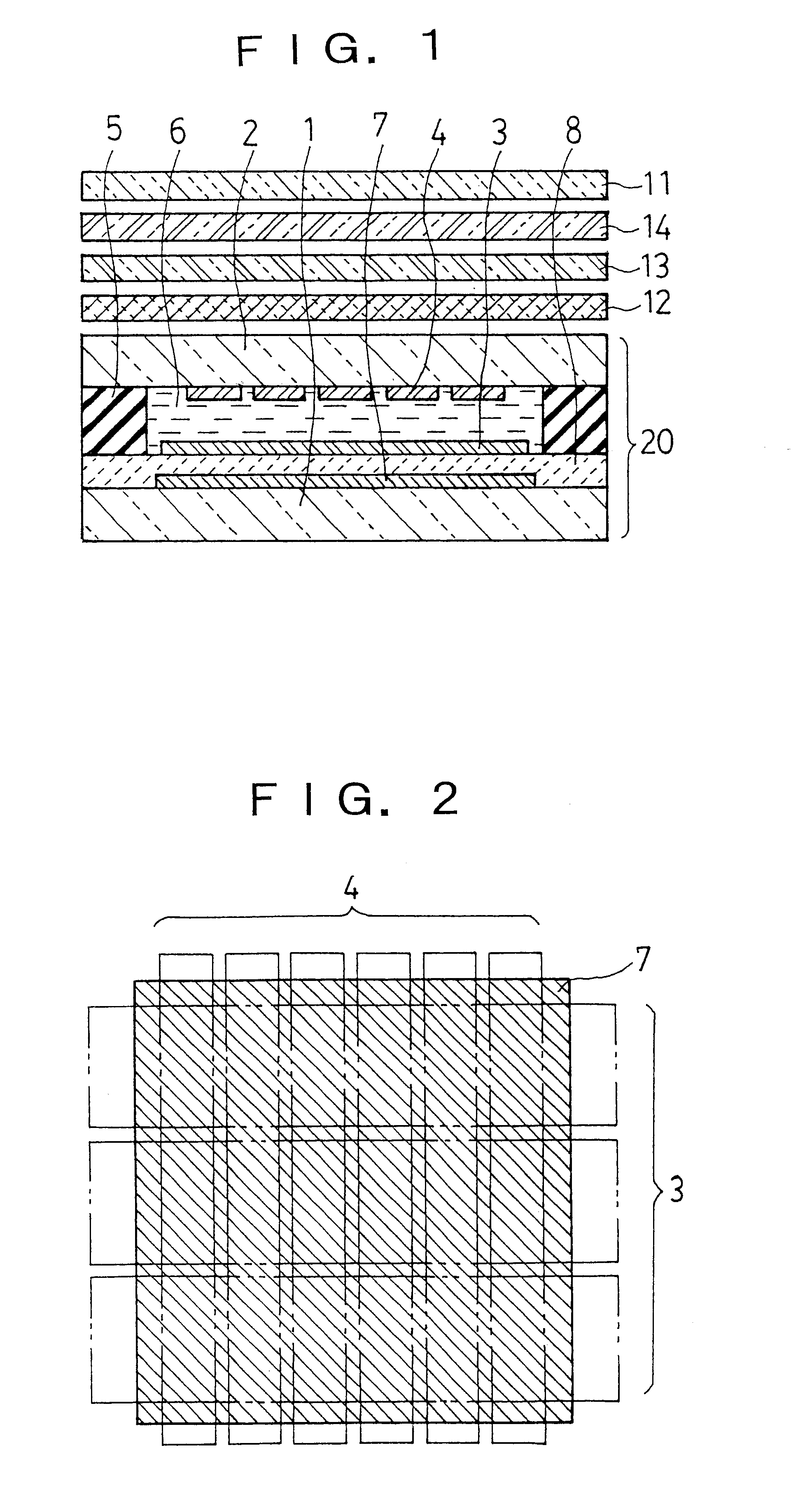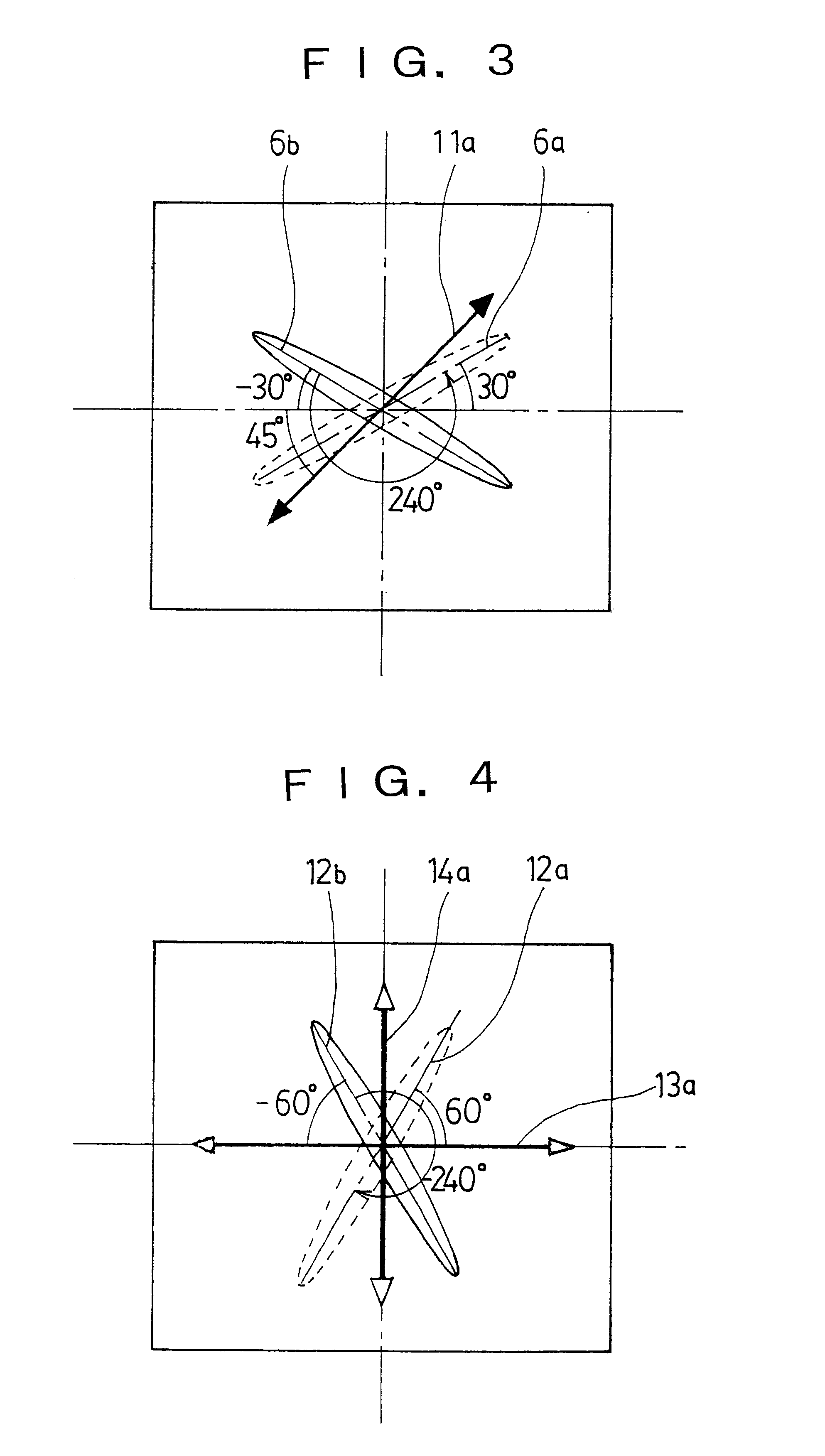Liquid-crystal display
- Summary
- Abstract
- Description
- Claims
- Application Information
AI Technical Summary
Benefits of technology
Problems solved by technology
Method used
Image
Examples
first embodiment
a liquid crystal display device according to the invention is described with reference to FIGS. 1 and 2.
FIG. 1 is a schematic sectional view showing the constitution of the liquid crystal display device, and FIG. 2 is a plan view showing a planar layout relationship among a reflector, first electrodes, and second electrodes, installed in the device.
As shown in FIG. 1, the liquid crystal display device is comprised of a liquid crystal element 20, and a twisted retardation film 12, a first retardation film 13, a second retardation film 14, and a polarizing film 11 that are disposed in sequence on the outer side (a side opposite from the side facing nematic liquid crystal: the visible side) of a second substrate 2 of the liquid crystal element 20, thereby constituting a reflection-type liquid crystal display device of single polarizing fil-type.
The polarizing film 11, the second retardation film 14, the first retardation film 13, and the twisted retardation film 12 are integrally bonde...
second embodiment
FIGS. 6 to 8
Now, a second embodiment of a liquid crystal display device according to the invention is described hereinafter with reference to FIGS. 6 to 8.
First, the configuration of the liquid crystal display device is described with reference to FIGS. 6 and 7. These figures are similar to FIGS. 1 and 2 for the first embodiment described above, and parts corresponding to those in FIGS. 1 and 2 are denoted by the like reference numerals. Description thereof is simplified or omitted.
The liquid crystal display device according to the second embodiment also constitutes a reflection-type liquid crystal display device of single polarizing film type, and differs from the constitution of the first embodiment of the invention only in respect of the type and installation angle of retardation films, installation of a diffusion film, use of reflective electrodes instead of the reflector.
A liquid crystal element 21 of the liquid crystal display device incorporates reflective electrodes 9 made o...
third embodiment
FIGS. 9 to 10
Now, a third embodiment of a liquid crystal display device according to the invention is described hereinafter with reference to FIGS. 9 and 10.
FIG. 9 is a schematic sectional view showing the constitution of the liquid crystal display device, and FIG. 10 is a plan view showing a planar layout relationship among color filters and first as well as second electrodes (shown by phantom lines) of a liquid crystal element. In the figures, parts corresponding to those in FIGS. 1, 6, and 2 are denoted by the like reference numerals.
The liquid crystal display device according to the third embodiment differs in constitution from the first and second embodiments in that the color filters are installed between a reflector 7 and the first electrodes 3 inside the liquid crystal element, thereby composing a reflection-type liquid crystal display device capable of effecting colored display.
With the liquid crystal display device, the liquid crystal element 22 is provided with the 1 .mu....
PUM
 Login to View More
Login to View More Abstract
Description
Claims
Application Information
 Login to View More
Login to View More - R&D
- Intellectual Property
- Life Sciences
- Materials
- Tech Scout
- Unparalleled Data Quality
- Higher Quality Content
- 60% Fewer Hallucinations
Browse by: Latest US Patents, China's latest patents, Technical Efficacy Thesaurus, Application Domain, Technology Topic, Popular Technical Reports.
© 2025 PatSnap. All rights reserved.Legal|Privacy policy|Modern Slavery Act Transparency Statement|Sitemap|About US| Contact US: help@patsnap.com



